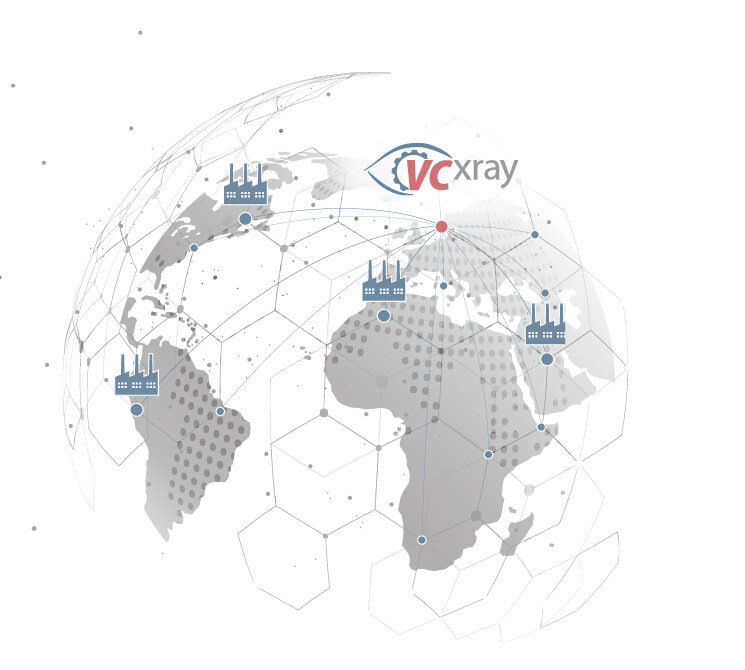
Metrology in X-ray testing
Metrology and measurement technologies are of critical importance in industrial manufacturing. They enable precise quality control, process optimization, support product design and development, ensure certifications and standards, enable failure analysis and traceability. As a result, high-quality products are manufactured, more efficient production processes are created, and customer requirements are met. Overall, they contribute significantly to a company's success.
Dimensional metrology and metrology face several challenges, including ensuring high accuracy and minimizing measurement uncertainty, adapting to complex geometries and materials, automating and integrating with manufacturing processes, efficiently collecting and processing data, providing fast measurements without sacrificing accuracy, developing cost-effective solutions, qualifying skilled personnel, complying with standards, and ensuring traceability of measurement results.
Computed tomography (CT) is typically used in metrology when conventional measurement techniques reach their limits and certain features cannot be measured by other methods, or can only be measured with difficulty. CT is particularly useful in measuring features that require three-dimensional acquisition or that are hidden inside objects. CT can reveal complex internal structures of components or workpieces that are difficult to reach using conventional methods such as tactile measurement or optical profilometry. Examples include cavities, inclusions, internal holes or cast structures. 3D-printed parts in particular can have complex geometries and internal structures. CT can be used to comprehensively measure and analyze such parts to verify print quality and conformance to design data.
Overall, CT enables non-destructive and highly accurate measurement of complex three-dimensional structures and internal features that are difficult or impossible to access using conventional measurement techniques. It is a valuable tool in dimensional metrology for special applications where accurate and comprehensive information about the internal structure of objects is required.
Computed tomography (CT) can be used in a variety of ways in metrology and metrology to provide precise measurements and comprehensive analysis of components and materials. Here are some of the common applications of CT in this field:
Computed tomography has become a powerful tool in metrology and metrology because it provides nondestructive, high-resolution 3D images and enables comprehensive analysis of materials and components. Its ability to visualize complex internal structures and make precise measurements makes it a valuable tool in modern industry.
There are several international norms and standards that govern the dimensional measurement of components using CT inspection. These standards specify how CT measurements should be performed, what procedures and techniques must be used, and how the results should be interpreted. In particular, VDI/VDE 2630: This series of guidelines issued by the Association of German Engineers (VDI) and the Association of German Electrical Engineers (VDE) covers various aspects of industrial computed tomography. Guideline VDI/VDE 2630 Sheet 1 contains general requirements for CT systems, while Sheets 2 through 4 cover specific topics such as measuring external and internal contours, analyzing defects and calibration.
It is important to note that the application of the above standards depends on the specific application and requirements of the component being inspected. However, adherence to these standards ensures that CT testing is performed in a standardized and reliable manner and that measurement results are accurately evaluated. Before performing a CT test, it is advisable to consult the relevant standards and ensure that all requirements are met.
As there are high demands on the test equipment associated with these standards, it is highly recommended to have the design of a test system reviewed by a specialist company before implementation. VCxray has a team of application specialists that can assist with implementation.
The requirements for CT systems for metrology and measurement vary widely due to the complex range of components and applications. Typically, extensive application studies are required to verify feasibility and standards compliance prior to procurement.
Selecting the right system can therefore be complex, and a good decision must weigh many parameters such as size, speed, cost, etc. Contact our product specialists for further guidance.
Contact us today
Improve the quality and safety of your components with our state-of-the-art X-ray systems and CT systems. Contact us today to learn more about our material inspection solutions. Our team is always available to answer your questions and develop a customized solution for your needs.

With our Service centers and Hubs worldwide,
we will complete your staff with maximum
efficiency in your specified time frame and
without interrupting your operations.
No matter where you are, we are never far away.
Our knowledge and experience
maximize your company‘s profits.